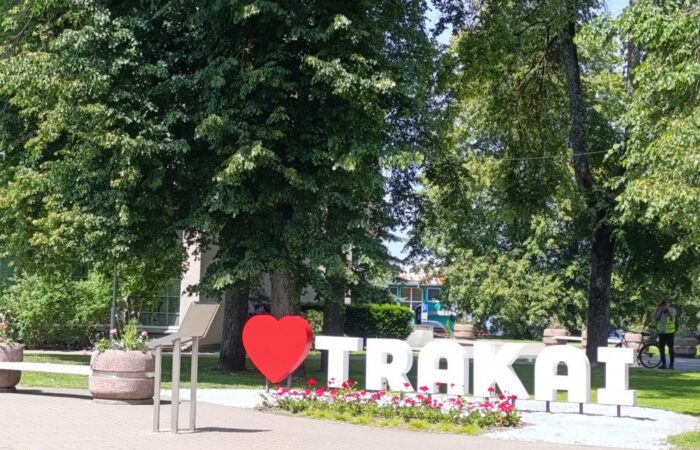The Triumphal Arch and the Government House of Moldova alongside the main Stefan cel Mare si Sfant Boulevard – or – St.Stefan Boulevard
By Alexander York
It was a great pleasure to visit Chișinău, the capital of Moldova, a small landlocked country between eastern Romania and southern Ukraine. This brief adventure in April began 14 hours earlier when I departed Bucharest in a bygone-esque and very rustic overnight train that originates from the 1960s.
This particular journey is a story in itself, as the rickety old carriages with rows of four-bunk couchettes are an absolute must for train enthusiasts. The photographs (below) ultimately say it all, and this was a distinct step back in time. But there is one issue – it is a particularly noisy experience as the carriages continually bang and rattle in unison throughout the entire 14 hours. And when at the border crossing between Iași, a city on the Romanian side, and Ungheni in Moldova, the European-gauge bogies have to be changed over because the old Soviet tracks are wider. Hopefully the day is to come when they will be made the same.
General train atmosphere on the Bucharest to Chișinău sleeper – and end stop train station
But after this rigorous maneuver and passport control we were finally in Moldova at the crack of dawn. Splendid sun-filled countryside greeted us for much of the way until finally I arrived at end stop Chișinău. Despite not having much sleep, and not knowing what to expect of this city, it was a simple 15-minute walk from the pleasing and newly restored train station to the centre.
For general orientation purposes, I soon discovered it was of high importance to make my way directly to the essential Stefan cel Mare si Sfant Boulevard, which translates as Saint Stefan Boulevard. By proceeding along this main three-kilometer central road, it led me to all my essential requirements.  Monumentul lui Ștefan cel Mare – The St. Stefan the Great monument – the symbol of Moldova
Monumentul lui Ștefan cel Mare – The St. Stefan the Great monument – the symbol of Moldova
Halfway along this pleasurable promenade is the all-important and all-telling Saint Stefan the Great (1433-1504) statue standing at the Great National Assembly Square and which faces the main road. He was a prince who resisted Ottoman rule and still today this local legend is the symbol of Moldova, and theoretically is seen everywhere. If you are not sure who this individual is prior to arrival, then look at your Moldovan lei banknotes and study his portrait – then, it soon becomes obvious. The Moldovan tourist information centre – on the St. Stefan main road
The Moldovan tourist information centre – on the St. Stefan main road
Beyond this distinct point, much else from a tourist perspective follows, and one can quickly access the sights with relative ease. There are many signposts pointing out the parliament and ministry buildings, churches, museums, theatres, university departments and so forth. The informative tourist information bureau is also on route, ideal for a chat and a complimentary map of this immediate area. Then hotels, parks, restaurants follow too. Really it was that easy to get by from the strategic Saint Stafan statue and tourist office onwards. I could not go wrong.  The Metropolitan Cathedral of Christ’s Nativity and the Cathedral Park
The Metropolitan Cathedral of Christ’s Nativity and the Cathedral Park
Time was short and I knew I was not going to manage to see it all. After observing the protector-of-the-land, it was a simple matter to merely cross the road and observe the 1830 Neo Classical Metropolitan Cathedral of Christ’s Nativity, as well as take to a local buffet and enjoy elevenses in this delightfully green and shady park. Close by is the Triumphal Arch, which directly faces the European Union and Moldovan flag-waving Government House. All finally led to my nearby hotel, south of the city centre. Presidential Palace and State government office
Presidential Palace and State government office
That evening I met with Laurentia, a tour guide and friend, for a light supper at the La Plăcinte restaurant. This is part of a chain that is more of a local affair, slightly away from the main tourist scene and serving splendid Moldovan food at reasonable prices. This local restaurant is a good place to step aside from the main tourist trails and find more of the local people scene
This local restaurant is a good place to step aside from the main tourist trails and find more of the local people scene
The day ended with a light stroll around the reposeful Valea Morilor Park. Remarkably this has its own “Potemkin” steps – all 192 of them, exactly the same number as in nearby Odessa. It was lovely to wind down after so much time traveling from Budapest via Bucharest and the Duna Delta, to walk around the lake and take it all in. All of which rounded off my day on a high note.  Evening atmosphere at the Valea Morilor Park
Evening atmosphere at the Valea Morilor Park
The second, and unfortunately last, day I dedicated to museums. The excelling National Museum of Ethnography and Natural History was a great start to see something of Moldovan culture and folklore. And the eloquent National Museum of Fine Arts had old-style and modern-day artworks that were most enlightening. Then before I knew it my time was up and I returned to the all-important Saint Stafan Boulevard, had lunch and caught the local Number 30 bus to the airport.  National Museum of Ethnography and Natural History
National Museum of Ethnography and Natural History  I hope this local lady from the National Museum of Fine Arts will finally appreciate being included in this story.
I hope this local lady from the National Museum of Fine Arts will finally appreciate being included in this story.
So much happened in the quickness of time but it was good impressions all the way and I really enjoyed my time in Chișinău. With all that I saw, from some rich architectural heritage of the past two centuries to the occasional and oddball Soviet structures, it was clear there will be more to explore when it comes to next time.
Getting to Moldova is easier than ever. Many cities in Europe, including Budapest, now connect with Chișinău International Airport, and frequent buses and trains go to and from Romania which connects with Hungary. Visas no longer apply for many countries and a long weekend there comes highly recommended. I shall return for sure.
Chișinău is a smallish city with a population of about 700,000, and for now is a lesser known European capital. Although I did some research before going, there were mixed messages. I personally found Chișinău better than expected and the locals most welcoming. Yes, of course there are the decrepit tower blocks but these are common sights elsewhere too. Although there are some dismissive press reports, the city centre is very tourist-friendly, provides for all budgets and would make a comfortable, enjoyable stay for anyone. The Hotel Chișinău
The Hotel Chișinău
The language is Romanian but communication is easy as many people from post-1991 times speak English. There is plenty of tourist information in various languages too. Chișinău is the most economically prosperous locality in Moldova and its largest transportation hub. Nearly a third of Moldova’s population lives within the capital’s region. Moldova has a history of wine producing and Chișinău hosts the national wine festival every October.
In recent living memory, and since Moldovan independence from the USSR in 1991, many names of streets and localities have been changed. Old Soviet communist themes were replaced by more national and appropriate ones. Following Russian’s 2022 full-scale invasion of Ukraine, Moldova allowed more than 600,000 neighbouring refugees to cross its borders. Despite being among one of the poorer countries in Europe, Moldovans have continued to host more than 100,000 dispossessed persons fleeing today’s war zone. Many of them are in Chișinău. President Maia Sandu – Timișoara – January 2024
President Maia Sandu – Timișoara – January 2024
On 21 May 2023, tens of thousands of Moldovans took to the streets in a large rally to support the country’s European Union membership bid, which was organised by the popular and pro-European President Maia Sandu. Moldova hopes to join the EU block by 2030.
Finally, here is a remarkable Hungarian twist that relates to the name of the Moldovan capital. It is cited by Stefan Ciobanu, (1883-1950), a Romanian historian and academic. The theory is that “Chișinău” has a similar ring to “Kisjenő”, a small town in former Hungary pre-Trianon 1920 but which today is located in western Romania, where it was finally renamed ”Chișineu-Criș” – a remarkable coincidence perhaps? This matter also requires further research and hopefully can be followed up before too long.
All Photographs – Alex York

Alexander York




